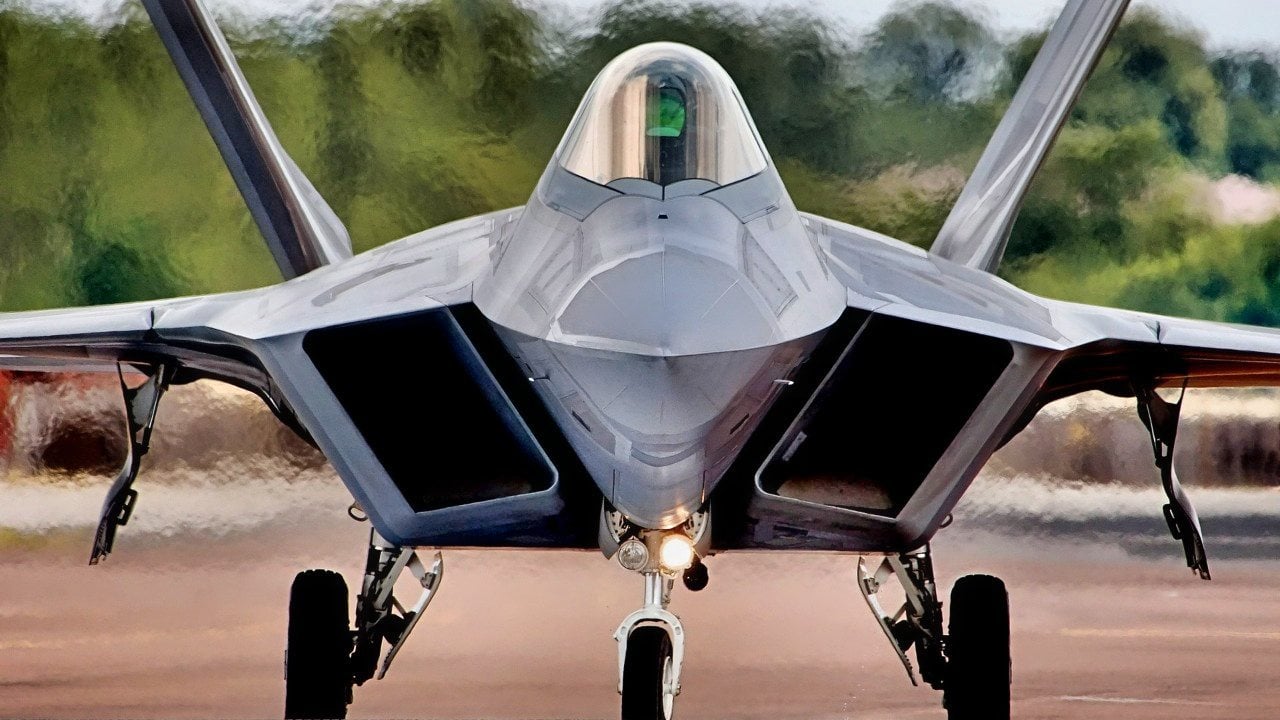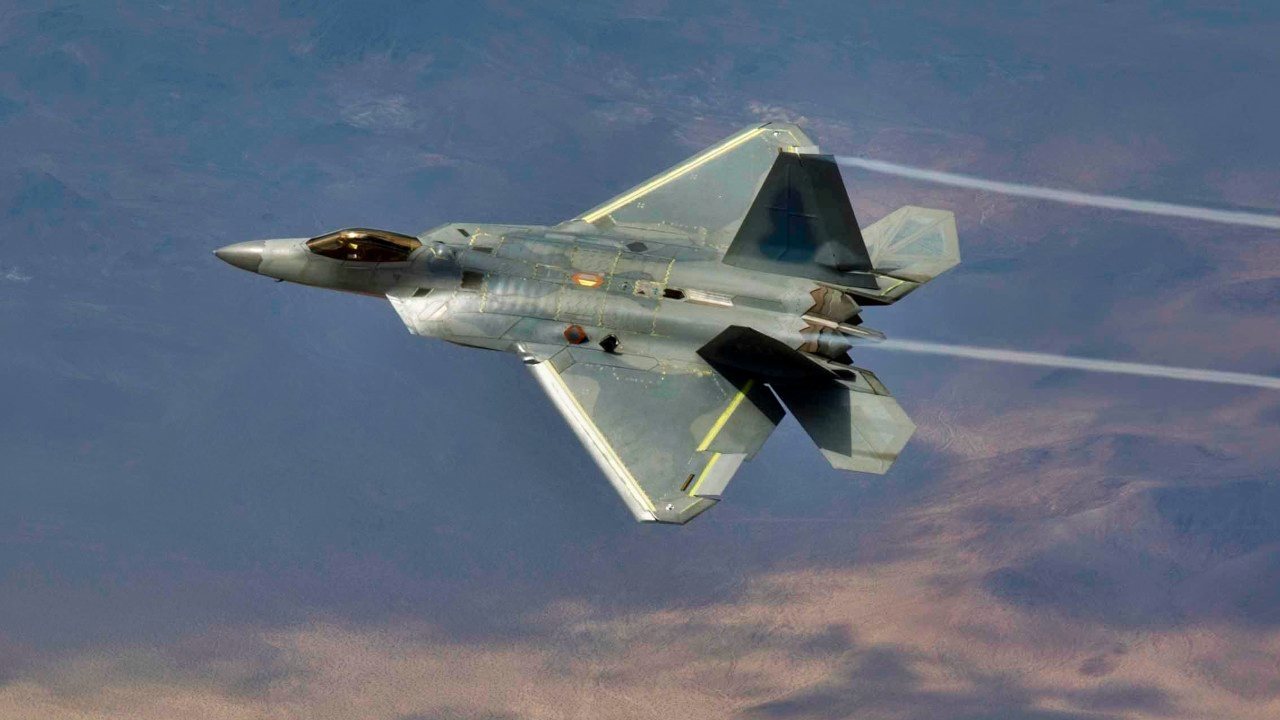Inside the U.S. Air Force's Plan to Make Sure the F-22 Raptor Dominates the Sky
The F-22 Raptor, the world’s first stealth fighter, is set to extend its service life into the 2030s despite its aging design, thanks to significant multi-billion-dollar upgrades.
Summary and Key Points: The F-22 Raptor, the world’s first stealth fighter, is set to extend its service life into the 2030s despite its aging design, thanks to significant multi-billion-dollar upgrades.
-These enhancements include advanced sensors, infrared search and track systems, helmet-cued targeting, and stealth fuel tanks, all aimed at maintaining air superiority.
-However, with the U.S. halting Raptor production and the Next Generation Air Dominance (NGAD) program delayed, questions arise about whether the small fleet of upgraded F-22s can handle increasing threats from China’s growing 5th-generation fighter fleet.
-The F-22 will likely be accompanied by AI drones and upgraded F-35s to ensure air superiority.
F-22 Raptor: Billions in Upgrades to Extend Dominance into 2030s
With the future of America’s next air superiority fighter now in question, America’s king of the skies, the F-22 Raptor, is set to extend its reign well into the 2030s, thanks to a slew of multi-billion dollar upgrades already underway – and the list keeps getting longer.
Just last week, the Air Force awarded another billion-dollar contract to RTX (formerly Raytheon) for a slew of new sensor upgrades meant to help ensure the world’s first-ever stealth fighter remains the best-ever at its air combat role.
But with America’s F-22 fleet already eclipsed in numbers by China’s 5th generation J-20s, China’s carrier-capable J-31 stealth fighter making its way toward service, and a half dozen other stealth fighter programs rapidly maturing, the question American planners have to be asking themselves right now is… Just how good can America make a stealth fighter that was largely designed in the 1980s, started flying in the 1990s, and in terms of airframe hours, is rapidly approaching middle age?
The answer, mounting evidence suggests, is scary good… But with such a small fleet of combat-ready Raptors, the next question that has to be asked is: Is scary enough?
Air Superiority in the age of ‘Goldeneye’
The F-22 Raptor’s sleek and stealthy design, incredible aerobatic performance, and unparalleled reputation gained through years of dominating air combat exercises the world over is often more than enough to make you forget that this aircraft, in its general production state, has been flying since before the founders of Google even registered that domain; when buying gas in Los Angeles cost $1.36 a gallon, and when the best video game in the world was Goldeneye: 007.
More than a quarter-century ago, the F-22 Raptor’s first flight ushered in a new era in tactical aviation, changing more about the future of air combat in a single afternoon than arguably any flight since Germany’s Me 262 introduced jet propulsion to fighter designs. This new fighter was so powerful that it produced more thrust without its afterburners engaged than the legendary F-15 Eagle could at full tilt – and when Raptor pilots decided to really lean into the throttle, the F-22’s immense power even eclipsed that of the SR-71 Blackbird. And all of that insane power was funneled through a pair of thrust-vectoring nozzles that gave the aircraft unparalleled maneuverability in America’s fighter stables.
Equipped with the most advanced and powerful radar ever affixed to a fighter at the time and new data-fusing avionics that could draw pertinent information about the battlespace from a bevy of cutting-edge sensors carried onboard (as well as from a long list of others carried by other platforms), the F-22 provided its pilots with more situational awareness than any fighter ever had before.
And in the court of public opinion, all of that even falls short of the Raptor’s true claim to fame – an unbelievably small radar return, delivered through a combination of advanced stealth design and radar absorbent materials. The F-22 is so stealthy, in fact, that despite being the oldest stealth fighter in service on the planet, it also remains the stealthiest, with a radar cross-section that’s generally estimated to be as much as 15 times smaller than the F-35, and maybe 100 times smaller than China’s J-20.
This combination of raw power, maneuverability, advanced avionics, and, of course, stealth, all coalesced in a fighter so capable it not only became the basis for the 5th generation of fighters but also arguably helped to introduce the general public to the very concept of fighter generations in the first place.
The Raptor takes the Eagle’s crown
The Raptor was so good that in 2002, three years before reaching operational service, former Eagle driver turned Raptor test pilot Mike ‘Dozer’ Shower and three of his F-22 flying peers wiped out 12 F-15Cs in less than two minutes in one of several air combat exercises that saw Eagles falling time after time to America’s newest bird of prey.
The F-15 had never lost an air-to-air engagement to an enemy aircraft, with an unmatched air combat record of 104 wins and 0 losses, but even the Eagle was all but defenseless when it came to engaging the Raptor.

“In an F-15 you’re sensor operator, you’re working the radar; you’re the guy working this all out and managing the systems and putting together the 3D picture in your head. That’s the difference with the F-22 Raptor. It does it all for you,” Shower recalled. “You could take four weapons instructors in an F-15 each and you could have some lieutenant who is ‘weapons clueless’ and he’s gonna find them all and kill them all. Then you put one really good guy in an F-15 against a Raptor and he’s still gonna get killed; there’s that much of a difference in technology.”
Even today, some 26 years since the Raptor first took flight, the F-22 remains the measuring stick by which all new fighters are compared, with only one tactical aircraft eclipsing the jet’s onboard technology (the F-35), and none capable of delivering the same combination of 21st-century stealth along with decidedly 20th-century brute force combat prowess.
But despite the Raptor’s long list of accolades, there is no denying that the F-22 also comes with a long list of downsides.
The king of the skies becomes an endangered species
The F-22’s production run, abbreviated to just 186 airframes and only 150 combat-coded jets, doomed the Raptor to incredibly high per-unit costs, similarly high maintenance costs, and worst of all, ensured no F-22 could be replaced if damaged, shot down, or simply aged out of service. To put it simply, the Raptor may be the deadliest jet in the sky… But ever since the sun set on its production line, it’s also been an endangered species.
In fact, were it not for the F-22’s early cancellation, it’s all but certain that the Next Generation Air Dominance program, meant to field a replacement for the Raptor itself, likely wouldn’t have materialized until much later, with F-22’s seeing consistent improvements throughout the rest of the intended production run resulting in more modern, and more capable, Raptors entering service years later than the final F-22 was delivered.
But now, as the Air Force’s budget modeling begins to buckle under the weight of cost overruns associated with strategically necessary programs like the LGM-35A Sentinel ICBM, replacing the Raptor may have to be pushed out by years – and that means the fighter that once proved to the world that it could take on four F-15s and win is now facing a potential future where numbers alone will force it to take on just as many 5th generation J-20s in order to survive.
Because with Raptor production permanently halted and NGAD production being pushed further back by the day, it’s no longer a question of which is better, the F-22 or China’s J-20… And instead, it’s rapidly becoming a question of just how many mass-produced J-20s can each Raptor really take on.

To that end, the United States Air Force has committed to spending billions to upgrade its small fleet of F-22s, addressing longstanding shortcomings in the platform and fielding a slew of entirely new capabilities.
But for a jet that can trace its earliest design lineage all the way back to the 1970s, and that was designed for the relatively short-range engagements of a Cold War turned hot over Europe, upgrading the F-22 Raptor for a potential conflict over the Pacific is no small undertaking.
Fixing the Raptor’s flaws
The first shortcoming the Raptor will need to overcome for Pacific operations is range. With roughly 18,000 pounds of fuel onboard and a combat radius of between 470 and 600 miles (depending on supercruising (or flying at supersonic speeds without the use of afterburners), F-22s meant to engage Chinese fighters in the air superiority mission would have few basing options in theater. Installations like Kadena Air Base in Okinawa, only around 400 miles from China’s coast, would be the target of massive cruise and ballistic missile strikes, potentially cratering runways and destroying aircraft on the tarmac and in hangars. This could force F-22s to fly combat sorties from significantly further out, which would reduce the total number of combat sorties flown while dramatically increasing logistical support needs from other platforms like refueling tankers.
To address this range issue today, Raptors often fly with a pair of 600-gallon non-stealth fuel tanks mounted on underwing pylons, each of which provides an additional 4,000 pounds of fuel for a combined total of some 26,000 pounds. The F-22’s pair of powerful F119 afterburning turbofan engines rip through between 30 and 38 pounds of fuel per mile, so these droppable-fuel tanks stretch the Raptor’s legs out to nearly 1,840 miles (one way), or a combat radius of better than 900 miles (in the best of circumstances).


